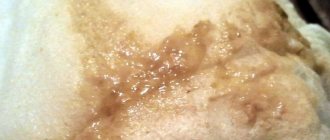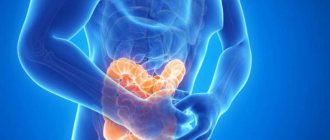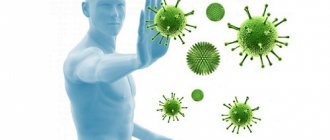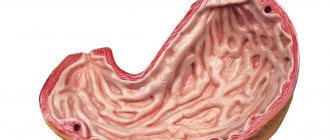Opisthorchiasis is a parasitic disease caused by the cat fluke. This infection is quite common today. It is worth knowing about the rules for preventing opisthorchiasis: protecting yourself from this disease is easier than undergoing long-term treatment for the infection itself and its consequences for the body.
The main source of infection is insufficiently processed fish, and in rare cases, meat. After entering the human body, the disease begins to develop and after a few days an acute stage begins, which is accompanied by a sharp deterioration in the condition, eating disorders, headaches, fever, and allergic reactions on the skin.
After a week, acute symptoms gradually disappear. The chronic stage of the disease begins, parasites continue to harm the body, but now their presence is less pronounced. At the chronic stage, parasite eggs begin to appear in the feces and bile, which can be used to accurately determine the presence of the disease.
If treatment is not started in time, the infection can trigger the development of other diseases of the liver, gallbladder and gastrointestinal tract as a whole. The more advanced the disease, the longer and more difficult the recovery period will be.
However, it is quite easy to protect yourself from the disease: following simple prevention rules will help protect yourself from infection.
Important! For residents of certain regions where cases of opisthorchiasis are more common, prevention is especially important.
Prevention at home
The main source of infection with cat fluke is river fish, usually of the carp family: ide, roach, dace and others. Contrary to misconception, opisthorchiasis can also occur in predatory fish; cases of the disease have been recorded after eating pike and other river predators.
In some regions of the country: in the Khanty-Mansiysk Okrug, Yamalo-Nenets, Tyumen, Tomsk, Omsk and a number of other regions, opisthorchiasis is especially common. This is due to the fact that local peoples’ national cuisine includes dishes made from raw, unprocessed fish.
The most dangerous food from the point of view of infection with fluke is stroganina - a national dish, which is fish cut into thin slices, not subjected to any heat or other treatment. Eating stroganina most often leads to the development of opisthorchiasis.
Therefore, the main measures to prevent opisthorchiasis in children and adults are related to the consumption of fish and its proper preparation. The basic rules for protecting against opisthorchiasis and other infectious diseases include:
- You should only purchase fish from trusted stores where all sanitary standards are observed. When fishing, you should choose water bodies where outbreaks of infection are recorded quite rarely.
- When boiling or frying river fish, the meat should be cut into small pieces and cooked for at least 10–15 minutes. It is advisable to cook the fish before frying.
- To get rid of parasites, meat can be frozen. At a negative temperature of 8–12 degrees, the parasites will die three weeks after freezing.
- When salting fish, sprinkle a thick layer of salt, and the salting process should last at least a week.
- The safest method of preparing river fish is hot smoking, after which it almost always becomes absolutely safe. Cold smoking does not give this result.
These are the basic rules of prevention when processing fish. If you prepare it correctly, the likelihood of contracting opisthorchiasis is extremely low.
Also, after preparing and processing fish and meat in general, you should thoroughly wash kitchen utensils, cutting boards, knives, etc. All surfaces must be wiped dry, preferably treated with a cleaning agent. It is better to cut fresh fish using disposable gloves, then wash your hands with soap.
In addition, when choosing fish in a store or when cutting caught fish, you need to pay attention to its condition. A healthy fish should have clear eyes and scales that look uniform, without spots or bald patches. The meat should be firm and of a healthy color, corresponding to the type of fish.
If the meat has various spots, any new growths, it is loose, helminths can be found in the offal - it is better not to eat such fish.
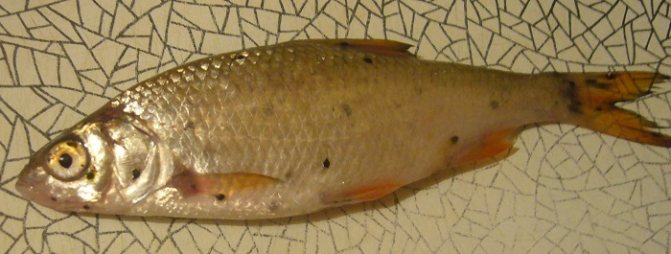
Important! You should not take antiparasitic drugs for prevention - drugs against opisthorchiasis are too toxic.
Also, do not forget about the rules of personal hygiene; many infections pass to a person from dirty hands. It is imperative to wash your hands with soap after visiting the toilet, returning from outside, playing with pets, or preparing meat and fish. Fruits and vegetables must be washed thoroughly, and meat must be cooked well.
If you follow all the rules for preparing fish and meat dishes and take care of personal hygiene, you can avoid infection with opisthorchiasis. It is worth noting that if one of the family members gets parasites, everyone else should also undergo treatment.
Features of development
After the larva has entered the snail, further development occurs. Suckers form on the body of the future parasite, thanks to which they can attach to the mucous membranes of various organs and tissues, mechanically damaging them. In this place, conditions are created for the development of pathogenic microorganisms, and the patient experiences the development of allergic reactions. After 21-30 days, the larvae become sexually mature and ready to reproduce. The female lays eggs, and the patient's condition worsens as the body becomes infected.
It will also be interesting: Liver fluke: features of the life cycle
Doctors distinguish several periods of the disease:
- Acute, when the unexpected appearance of clinical symptoms begins: the body temperature rises and does not go down for a couple of weeks. Skin rashes and discomfort in the armpits appear; upon palpation, doctors note that the liver is enlarged in size.
- A chronic form in which periods of decline and exacerbation are observed. A person is worried about increased nervous tension, changes in appetite, and fatigue.

Additional measures
In regions where the incidence of opisthorchiasis is increased, additional preventive measures are recommended. This also applies to all lovers of raw or lightly salted fish, people involved in fishing, children and adults who are constantly in large groups.
If the likelihood of getting sick is constantly increased, you should be examined at least once or twice a year to detect opisthorchiasis and other parasites. Mandatory methods include a blood test to detect antibodies that arise from parasitic diseases, and a stool test to detect parasite eggs. It is worth considering that eggs do not appear immediately, so it is recommended to undergo the test 3-4 times at regular intervals.
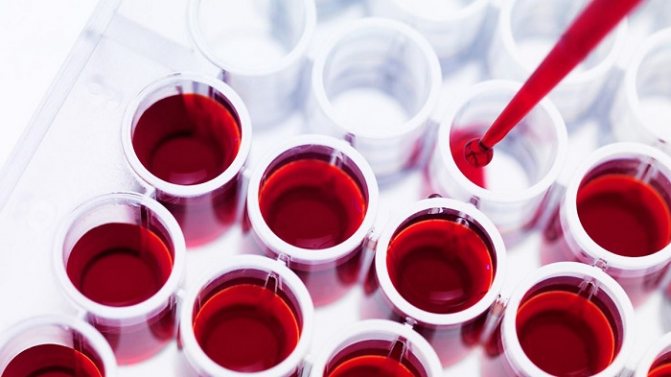
There is also an enzyme-linked immunosorbent blood test that allows you to determine the type of parasitic disease, its stage, and assess the extent of the damage. This method is the most accurate, but it is not carried out everywhere - the cost is quite high.
These are the main ways to prevent the disease. If opisthorchiasis is still detected during diagnosis, treatment must be started immediately. Usually it is complex and carried out in stages. Antiparasitic drugs, antihistamines for allergies, and various medications are required to restore the function of the gastrointestinal tract.
In general, it is quite easy to protect yourself from opisthorchiasis if you follow all the rules of prevention. The most important thing is to properly process and prepare fish, since it is the main source of infection.
How to treat opisthorchiasis with medications and folk remedies

The treatment regimen designed to get rid of fluke worms depends on the number of parasites, the severity of the disease, the presence of concomitant pathologies and other factors, therefore only a doctor can determine how to treat opisthorchiasis in each specific case.
First, the patient takes medications intended to prepare the body for deworming; at the next stage, antiparasitic therapy is carried out directly, and finally the patient undergoes restorative treatment.
The therapist can also prescribe innovative drugs, for example, Diethylcarbamazine (read more about it here).
First stage
Drug therapy is primarily aimed at relieving allergic symptoms, stopping inflammation, improving liver function, eliminating intoxication and treating concomitant pathologies. The patient is prescribed a diet that limits fat intake.
At the preparatory stage, the following medications can be prescribed:
- antihistamines to eliminate allergies (Suprastin, Tavegil);
- antibiotics in the presence of an associated infection (as recommended by a doctor);
- enterosorbents that eliminate intoxication (activated carbon, Polysorb);
- enzymes to normalize digestion (Creon, Mezim forte);
- choleretic agents that ensure the outflow of bile (Galstena, Kholosas);
- antispasmodics that relieve pain and spasms (No-shpa, Duspatalin);
- hepatoprotectors that improve liver function (Karsil).
The preparatory period lasts from two to three weeks, depending on the complications present in the patient.
Second phase
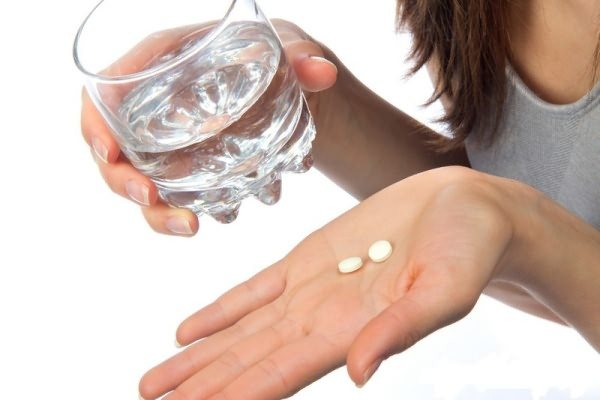
The deworming process depends on how effective the previous treatment was. The fact is that the drugs used to get rid of flukes are very toxic. If you do not prepare the sick body for such therapy, this will lead to a significant increase in intoxication and, accordingly, will harm the patient’s health.
You can destroy the Siberian fluke with Praziquantel, Chloxyl or Albendazole.
How to properly treat opisthorchiasis with these drugs depends on a number of factors (age, general health, etc.), so the duration of therapy and dosage are selected by the doctor strictly on an individual basis. The doctor tries to prescribe a treatment regimen that will cause less harm to the body, but at the same time the parasites will disappear.
When taking drugs against fluke worms, various side effects may occur, such as dizziness, pain in the hypochondrium, arrhythmia, drowsiness, nausea, vomiting, diarrhea, allergies, so treatment should be carried out under the supervision of the treating doctor, who must be reported about all negative phenomena.
Third stage
The final treatment is aimed at restoring the body after the activity of helminths. The patient is prescribed medications that improve the functioning of damaged organs - liver, pancreas, gallbladder, intestines. At this stage, traditional treatment is welcome, since the recovery period is quite long (up to six months), and therapy involves saturating the organs with useful substances, improving digestion and bile flow, accelerating tissue regeneration, which natural medicines can provide.

Drug treatment of pregnant women
While expecting a child, it is especially important to decide how to treat opisthorchiasis without causing harm to the fetus, since the list of medications allowed for a pregnant woman is significantly limited. Opisthorchiasis is dangerous during pregnancy, so a woman is usually sent to a hospital for treatment. There she is prescribed drug therapy that eliminates allergic reactions, relieves inflammation and facilitates the outflow of bile.
A pregnant woman should adhere to a special diet and drink at least two liters of clean water per day. Enzymes can be prescribed to improve digestion, and approved antispasmodics can be prescribed to relieve pain and spasms. Deworming is not carried out in the first trimester of pregnancy.
Treatment with folk remedies
The use of folk recipes in the treatment of opisthorchiasis is possible during the rehabilitation period. At the time of deworming, it is strictly forbidden to use folk remedies, since some of them can increase intoxication of the body and lead to aggravation of the patient’s condition.
You can learn how to treat opisthorchiasis using traditional methods from the Internet or books on traditional medicine. Celandine, cloves, garlic, birch tar, linden ash, nettle, St. John's wort, dandelion, and cumin are popular ingredients for preparing medicinal infusions.
Causes of rashes on the skin due to opisthorchiasis
O.felineus (cat fluke or Siberian fluke) enters the human body as a metacercaria, in other words, an infective larva. It takes 12-14 days for the larva to mature and transform into an adult, after which the parasite begins to actively feed and lay eggs.
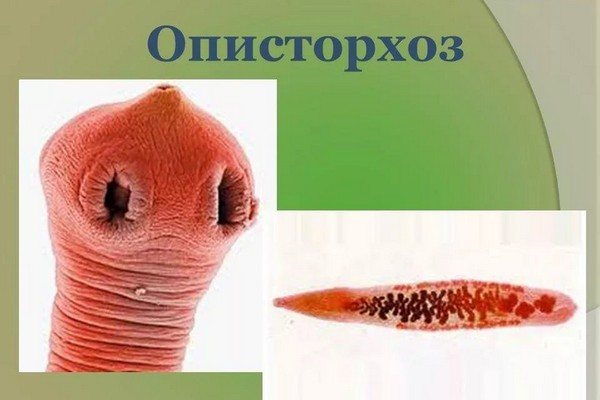
The life process of the cat fluke is accompanied by the release of specific substances that our body classifies as foreign and harmful, thereby activating the body’s defense system. Activation of the body's natural defense system causes the production of a specific immunoglobulin of the IgE class, which in its structure is a glycoprotein.
